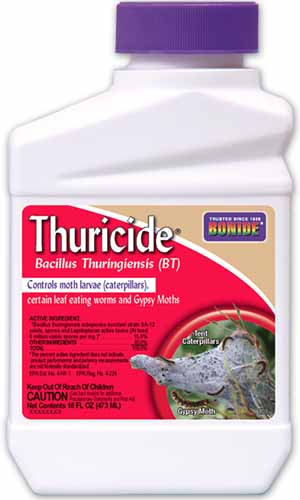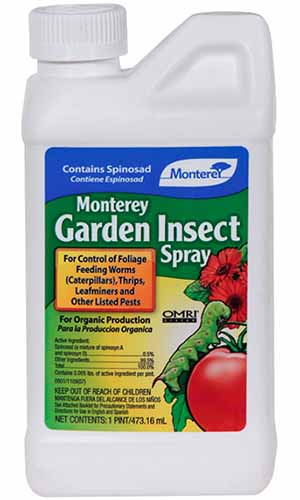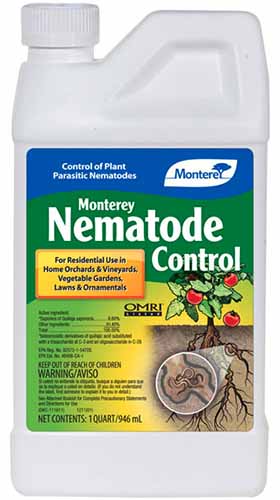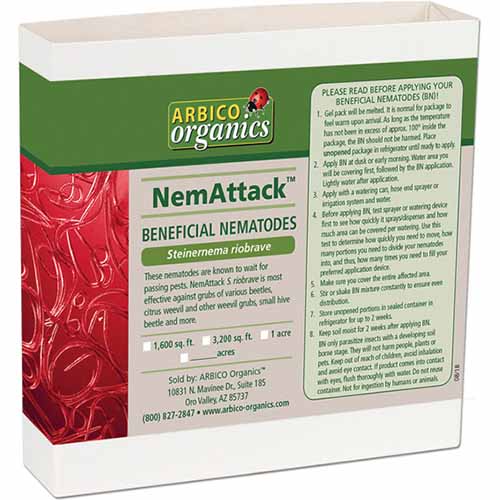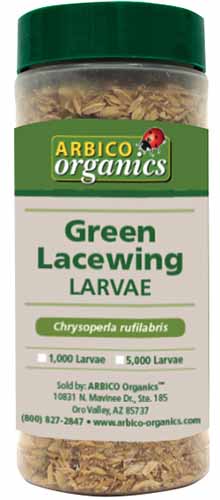Gladiolus is a classic summer perennial known for its spiky, sword-like foliage and upright flower stalks that offer a burst of summer color.
These plants are typically pretty robust and don’t struggle with a lot of pests. However, there are a few different ones you might encounter.
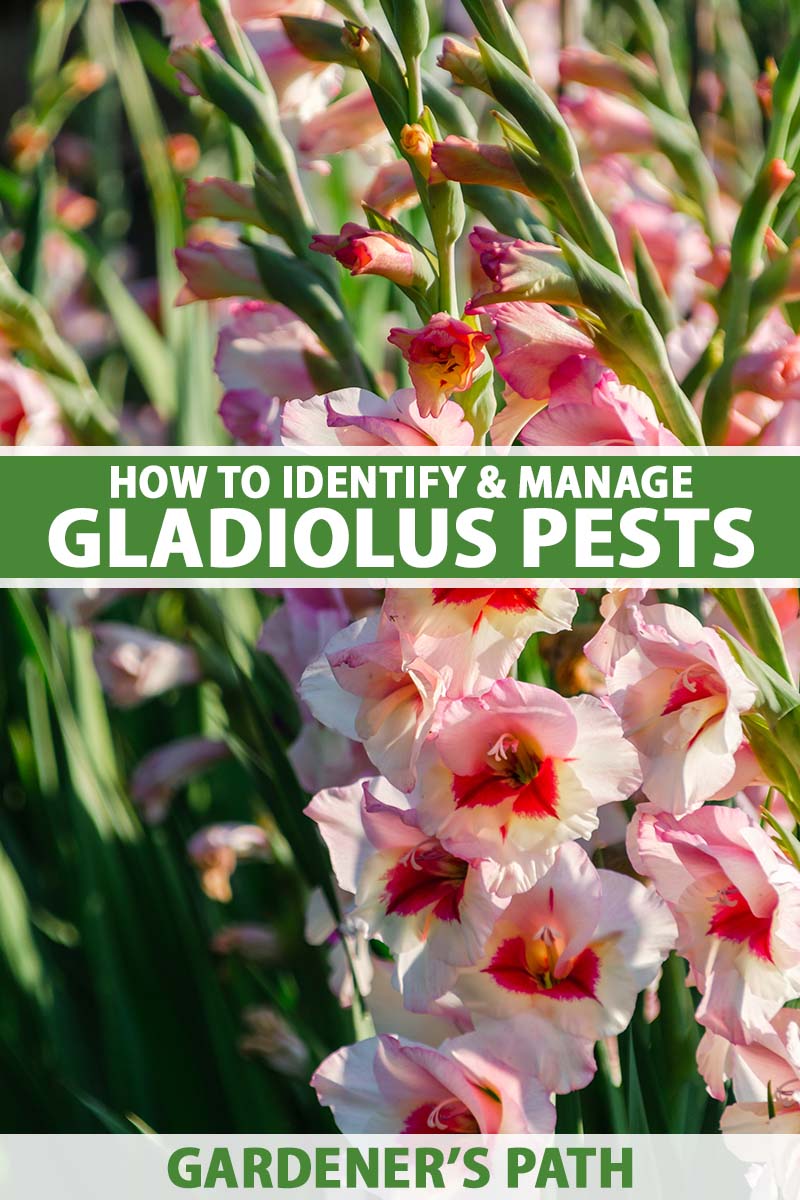
We link to vendors to help you find relevant products. If you buy from one of our links, we may earn a commission.
Gladiolus are particularly vulnerable to those pests that affect bulbs and rhizomes as well as corms, which are the underground structures these plants grow from. These storage structures look similar to bulbs but lack the onion-like layers that true bulbs have.
In our guide to growing gladiolus, we cover cultivation instructions for these showy perennials.
In this guide, we’ll be diving into the most common types of pests that may affect your plants, how to identify them, and what you can do to control them.
Here’s what’s coming up:
9 Common Gladiolus Pests
1. Bulb Mites
Belonging to the Rhizoglyphus genus, various species of bulb mites are tiny pests that will infest many different bulb and corm plants, including daffodils, hyacinths, tulips, and garlic, as well as gladiolus.
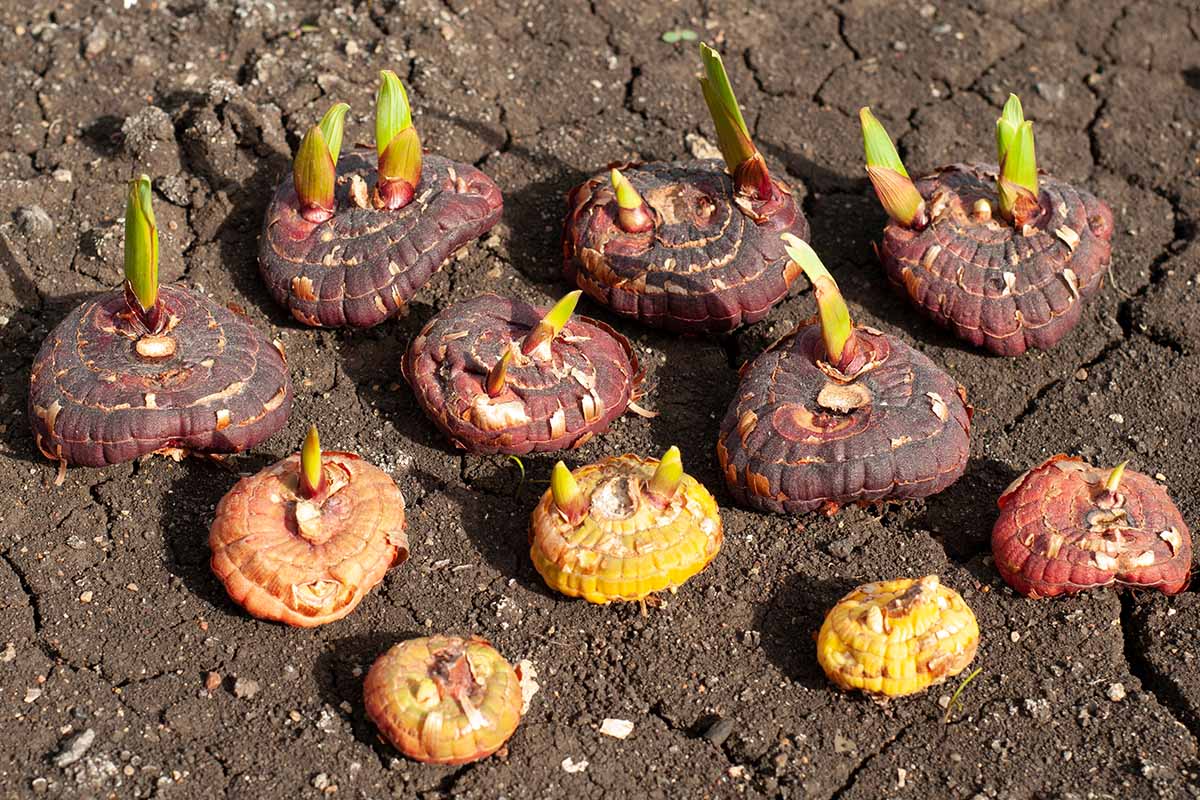
Bulb mites are itty bitty, between 0.55 and 0.75 millimeters long, with translucent, oval white bodies with amber or brown legs. They move slowly, and upon closer inspection, it’s not uncommon to mistake these pests for insect eggs.
The mites themselves feed on the corms and also provide entry points for the introduction of secondary bacterial and fungal pathogens.
Symptoms of a bulb mite infestation are varied. In the case of a large infestation, or a secondary infection from soilborne fungal or bacterial pathogens, the bulbs may fail to sprout or their growth may be stunted and warped.
You’ll need to dig up the corm to inspect it, as this is the only way you’ll know for sure that the pests are present.
Unlike other pests, bulb mites don’t have a dormancy period. This means they may be present and active throughout the year, with the most activity seen during the growing season.
If you dig up your gladiolus to store during the winter months, infested corms will spread these pests to other bulbs in your greenhouse or storage shed.
Before planting, ensure that you check carefully for mites, but obvious damage may also be caused by other types of pests, bruising, or improper storage over the winter.
Bulb mites are notoriously hard to control once they’ve become established, and in the case of a bad infestation, entire plants should be dug up and destroyed. Do not compost infested plant material.
2. Caterpillars
You may find a few different types of caterpillars munching away at your gladiolus. Cutworms and the zebra caterpillar (Melanchra picta) are the most common, and management for both is the same.
Cutworms and zebra caterpillars are both the most active in May. Cutworms are nocturnal and are most active at night, while M. picta is active during the day.
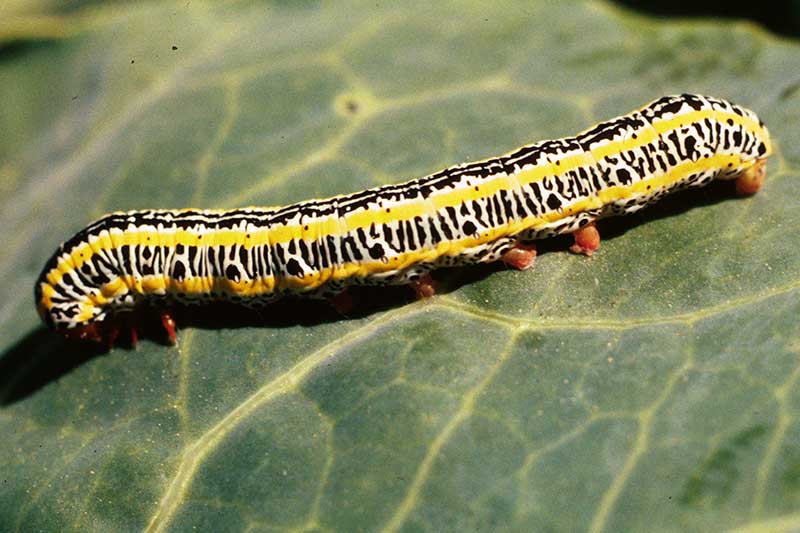
“Cutworm” is a generic name given to caterpillars in the Noctuidae family that feed on young plants by cutting them down at the soil line. They aren’t picky eaters and feed on a wide variety of host plants, eventually growing into adult nocturnal moths.
Cutworms are smooth-skinned with green, brown, gray, or black coloration when in their larval form. They are roughly two inches in length when they are fully grown.
All larval cutworm species are similar in appearance and will curl into a “C” shape when they’ve been disturbed or knocked to the ground.
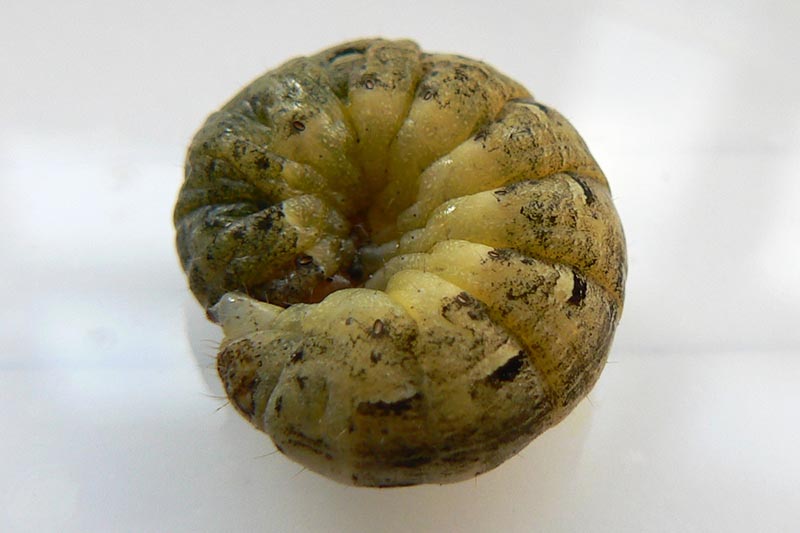
Zebra caterpillars are much more colorful and easier to spot. Mature larvae have long, yellow stripes on their bodies with a dark orange head.
They also belong to the Noctuidae family, but don’t feed in the same manner as cutworms. Instead, these caterpillars feed directly on the foliage, moving around and munching wherever they please.
The adult moths of the zebra caterpillar are reddish-brown with nondescript markings and will usually emerge from their pupal phase around June to lay their eggs. The eggs are yellow and laid in clumps on the undersides of leaves.
To deal with both of these types of caterpillars, you’ll want to use Bacillus thuringiensis kurstaki (Btk), a beneficial bacteria that is toxic to caterpillars when eaten. It paralyzes their digestive systems, causing them to die within a few days of exposure.
You can find Btk available as Bonide Thuricide from Arbico Organics.
If you consistently have issues with caterpillars in your garden, check out our full guide to Bt and how best to use this organic pesticide.
3. Gladiolus Thrips
Gladiolus thrips, Thrips simplex, will infest your gladiolus, irises, and freesias with gusto. They are tiny, thin, blackish-brown insects, under two millimeters long, that hide inside the leaf sheaths and flower buds.

Thrips are sap-sucking pests. They have a mouth that works like a straw, piercing foliage and stems to suck out the sap. Without intervention, these pests will weaken your plants and potentially spread to other vulnerable plants in your landscape.
Gladiolus thrips are active starting in the early spring when new shoots are forming. Symptoms of an infestation may include stunted shoots, leaves with a withered, bleached, or spotted appearance, and the flowers that are distorted and damaged.
You’ll most likely notice these pests in one of their pupal forms, hiding in the sheaths of the leaves or flower stalks.
Gladiolus thrips go through pre-pupa and pupa stages before turning into adults. Their bodies have burnt orange coloration in both pupal stages, with bright red “eyes.”
In the pre-pupa stage, the thrips have short wing pads and undeveloped wings that aren’t large enough to provide lift. Their antennae point forward, and they don’t move unless disturbed.
In the second stage, the thrips have longer wing pads, underdeveloped wings, and antennae that fold back over their heads. They will move slowly and hide unless disturbed.
Luckily, you can control these pests by applying a spinosad-based pesticide. Spinosad is a natural, all-purpose pesticide made from fermenting bacteria that naturally occurs in the soil.
When this chemical is dry, it won’t harm beneficial insects. Approved as an organic pesticide by the USDA in 2003, it is a tried and true solution.
Monterey’s Garden Insect Spray from Arbico Organics contains spinosad and comes in multiple sizes – gallon, quart, or pint.
Mix it up and apply it in the evening when pollinators aren’t active. The spray will dry overnight so it’s pollinator-safe the following morning.
Learn more about how to manage thrips in our guide.
4. Obscure Mealybugs
Obscure mealybugs, Pseudococcus viburni, are widespread garden pests in warmer, temperate climates.
This pest resembles the citrus mealybug (Planococcus citri), which commonly infects amaryllis, citrus trees, and canna lilies.
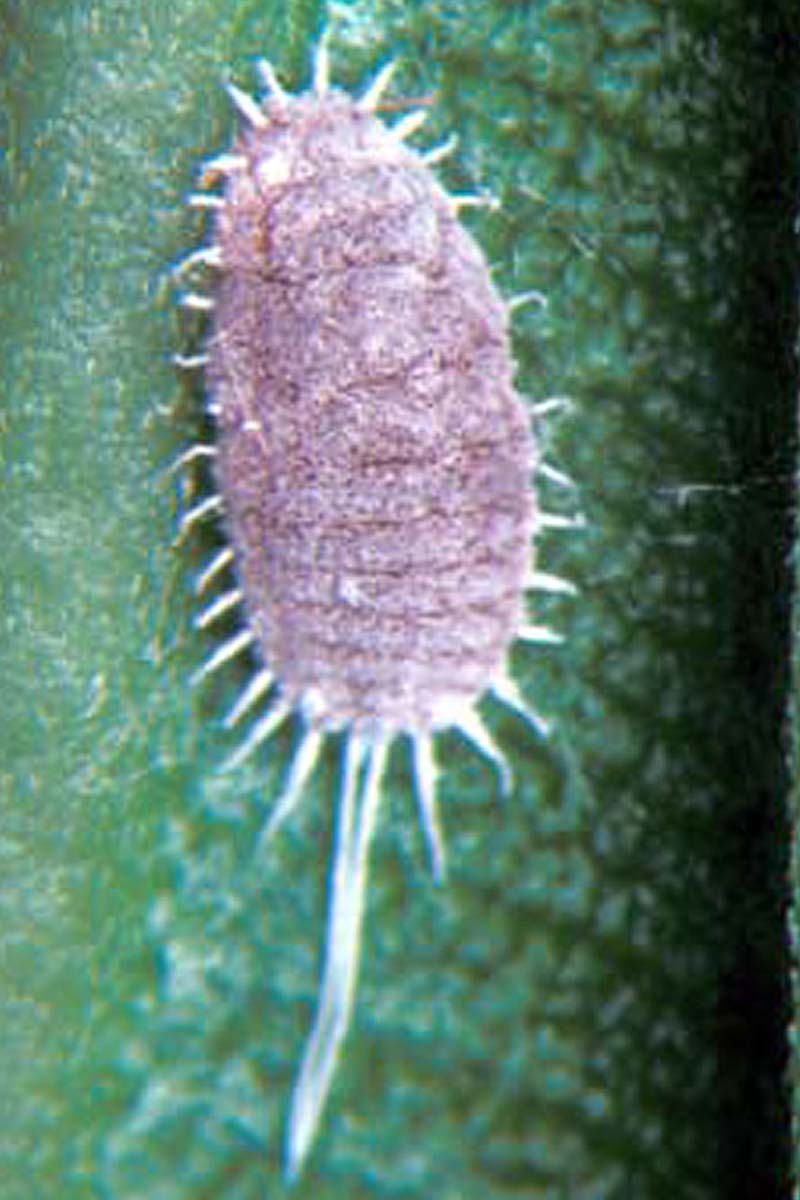
Unlike the citrus mealybug, obscure mealybugs have a much thicker layer of white wax on their backs. The filaments on their bodies are also longer, extending much farther outward than those on other species.
These pests are also sap-suckers, and they excrete honeydew onto the leaves of their host plant. Honeydew can cause sooty mold, which is unsightly.
These kinds of mealybugs don’t stop their activity in the winter like other pests.
If your gladiolus is infested, they’ll be most visible in June when their eggs first hatch. Obscure mealybugs will hide in the sheaths of the plant’s leaves, which can be tricky for pest management.
When it comes to P. viburni, fortunately it’s pretty easy to rid your plants of these pests. All you’ll need is one of the most popular forms of pest control for home gardeners: a high-quality neem oil spray.
Bonide Captain Jack’s Neem Max
Bonide’s Captain Jack’s Neem Max is available via Arbico Organics. It’s a high-quality 70 percent cold-pressed neem oil concentrate.
Spray in the late afternoon or early morning to prevent leaf burn in bright sunlight.
You can learn more about mealybugs in our guide.
5. Plant Bugs
No, I didn’t make this up. Belonging to the Miridae family of insects, this family of bugs has over 10,000 species commonly called capsid bugs, mirid bugs, grass bugs, or plant bugs.
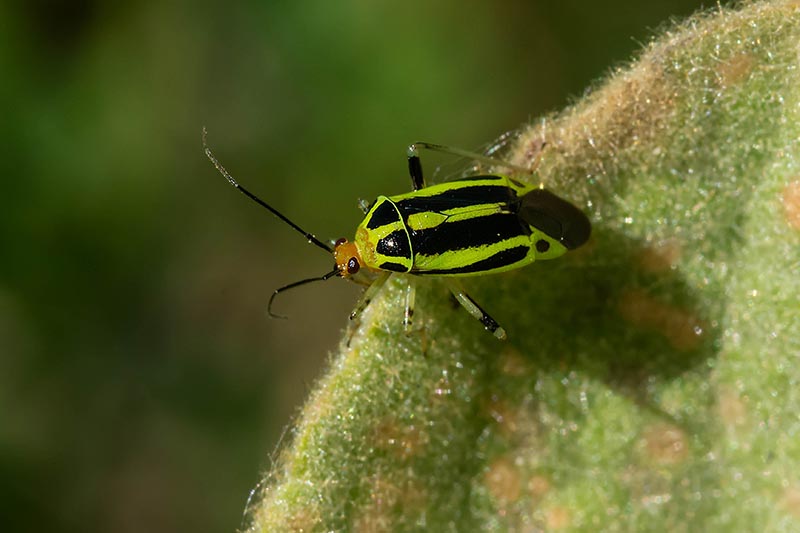
The two most common plant bugs that infest gladiolus are the tarnished plant bug, Lygus lineolaris, and the four-lined plant bug, Poecilocapsus lineatus. These bugs are sap-suckers, feeding on the sugars within your plant’s stems and foliage.
These pests emerge in mid-May. When they are young, they’ll hide within the sheaths of your gladiolus.

Both species are easy to spot when they are young. P. lineatus nymphs are small and have bright reddish-orange coloration, with light-colored stripes on their wing pads.
L. lineolaris nymphs are a lemon-lime color and will develop five black dots on their backs.
When they become adults, P. lineatus are yellow-bodied with four distinct black stripes going down their backs. Mature L. lineolaris have a black and brown coloration, with distinct yellow markings across their backs that create a “Y” pattern.
It’s best to eradicate these pests when they’re in their nymph stage, as that’s when they are most vulnerable and easiest to kill.
Insecticidal soap is a tried and true pest management option for dealing with plant bugs.
Bonide offers a ready-to-use insecticidal soap in 12-ounce or 32-ounce spray bottles that’s available from Arbico Organics.
Spray your plant thoroughly with insecticidal soap, getting in all the cracks and crevices of the foliage sheaths.
If you notice the adults rummaging around your plants, hand-pick them off and drown them in a bucket of soapy water.
6. Root-Knot Nematodes
In the genus Meloidogyne, root-knot nematodes are a pest that can affect many different host plants. They are microscopic, parasitic roundworms that infect the roots. While some types of nematodes are beneficial, these will negatively impact your plants.
The more temperate and tropical your USDA Hardiness Zone, the more likely you are to encounter these pests. They thrive in moist, warm soil and will strike in the summer growing months.
But how do you know if you have an infestation of root-knot nematodes? Unfortunately, by the time your plant signals that there is an issue, it might be too late.
Root-knot nematodes will create lesions on the corms. These open lesions invite bacteria and fungi to enter your gladiolus, eventually rotting out the corm and killing the plant.
During an active nematode infestation, your gladiolus will look sick – yellowing or wilted leaves and stunted growth are the most common symptoms. None of these symptoms are unique to this type of infestation, but there are other signs you can look for.
Are there other plants around your gladiolus that are also looking sick? If you dig up your plants and inspect the roots, do you see unnatural-looking galls – swollen circular growths – all over them?
These are hints that you’re dealing with root-knot nematodes. So let’s talk about control.
Luckily, these nematodes spread slowly, so you might be able to act before the infestation spreads to the rest of your garden.
However, there isn’t a way to rid your gladiolus of these pests once infested, so it’s best to remove them from the garden altogether and dispose of them in your trash can or firepit.
The leading solution for home gardeners is to decrease parasitic nematode populations within the soil, then rebuild the soil to fight off these pests naturally.
There are a few different ways you can do this, and it all depends on your specific situation to determine what will work and what won’t. Read our full guide on all the different methods to control root-knot nematodes in your landscape.
Personally, I prefer to use chemical or biological controls.
Chemical nematicides designed specifically to control parasitic nematodes are available, like Monterey’s Nematode Control from Arbico Organics.
This nematicide is sold as a concentrate, and all you’ll have to do is mix it with water and use it as a soil drench.
It’s recommended that you wet the area before your nematicide application. Check the package instructions for specifics on measuring and mixing.
On the biological side, you can also introduce beneficial nematodes to the soil.
The beneficial nematode species Steinernema riobrave will crowd out parasitic nematodes and eat their eggs.
NemAttack Beneficial Nematodes
Try NemAttack, available from Arbico Organics.
Don’t use a nematicide and beneficial nematodes simultaneously, as some nematicides will kill both parasitic and beneficial nematodes.
Like the above product from Monterey, some nematicides only persist in the soil for two weeks, so make sure you get your timing right if you opt to use both products.
7. Slugs and Snails
These slimy creepy-crawlies are no fun. And they are particularly awful when it’s warm, wet, and rainy.
Slugs and snails will usually strike in the spring or summer, but the damage they cause is always the same: holes in the foliage, usually appearing overnight.
The best way to manage slugs and snails is to hand-pick them off, or set up beer traps around the planting area to kill these pests en masse.
Beer traps are easy to set up – just grab a can of cheap beer (not the good stuff!) and pour it into a shallow bowl or saucer. Set it outside in the late afternoon, and come back the following morning to dispose of the dead slugs and snails that have drowned.
Check out our guide to managing slugs and snails for more options.
8. Tulip Aphids
Tulip aphids, Dysaphis tulipae, are pests that target and feed on the bulbs or corms of ornamental plants like tulips, irises, and gladiolus.
They can strike both planted bulbs and bulbs in storage. Additionally, when the infested plant begins to grow above ground, these parts will become a target for the aphids too.
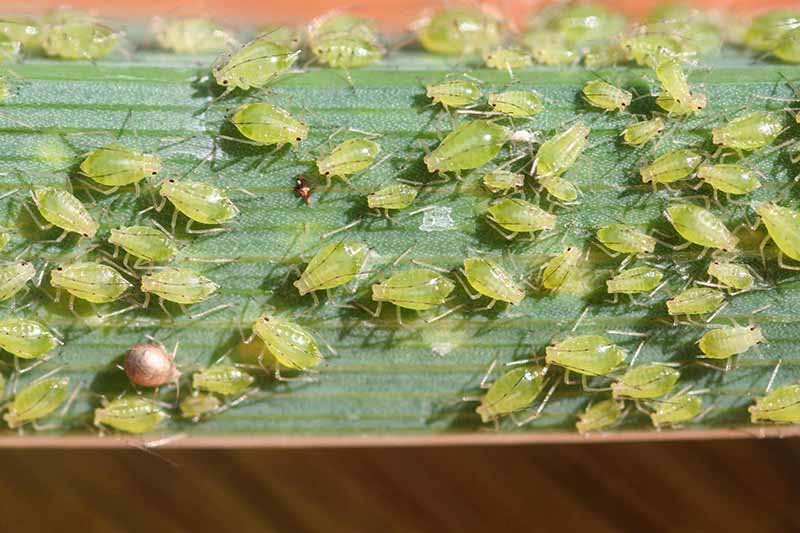
While aphids are generally easy to eradicate, they should be taken seriously if you notice them on your plant. Aphids are notorious for spreading viruses when they feed, causing more significant issues that are harder to manage.
If the plant begins to grow stunted and distorted, you’ll know if your gladiolus corm is potentially infested with aphids. Tulip aphids will move to the aboveground growth soon after it emerges from the soil.
You can control tulip aphids by using your favorite insecticidal soap. If you notice an infested corm while moving your plant out of storage, immerse it in an insecticidal soap dunk before planting, and this should clear it up.
When your gladiolus has started growing aboveground, spray it thoroughly with your insecticidal soap. Spray in every nook and cranny to avoid missing any of these pests.
If the infestation is severe, follow up your insecticidal soap treatment with an application of lacewing larvae. Lacewings are a natural predator that will eat aphids in every life stage.
Plus, when they’re done feeding on your aphids, they will move on to other pests in your garden you may not even be aware of.
Lacewing larvae should be applied at least seven days after your initial insecticidal soap treatment.
Otherwise, they could be exposed to the pesticide. You can purchase lacewing larvae from Arbico Organics, starting in a packages of 400.
Learn more about aphids and how to control them in our guide.
9. Two-Spotted Spider Mites
Spider mites are another sap-sucking insect that is easy to deal with if you’ve spotted them. The two-spotted spider mite, Tetranychus urticae, is one of the most common spider mite species.
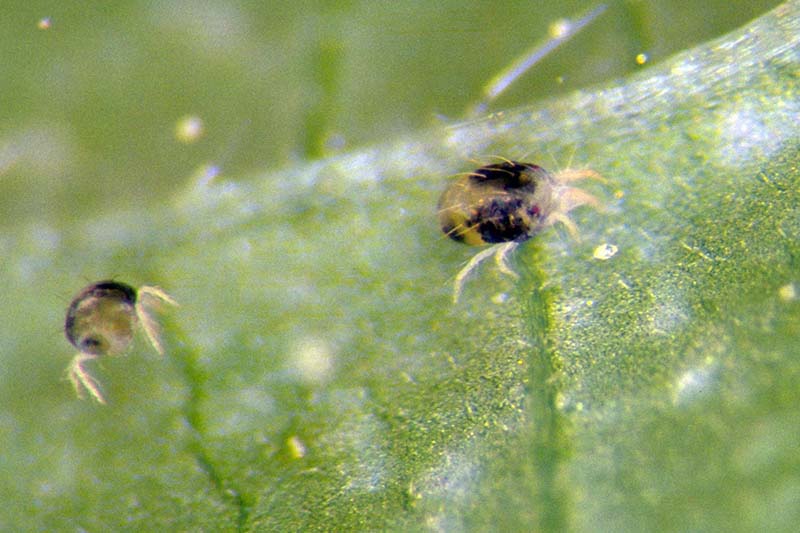
As you can guess from their name, these spider mites have spots that flank their bodies on either side. It’s difficult to see without a microscope. With the naked eye, these mites will look brownish.
Spider mites are teeny-tiny arachnids that feed on the contents of your plant’s foliage. They are sap-suckers, and they leave behind silvery patches on the leaves when they’ve finished feeding.
These mites will infest plants in the summer when the temperature is high, and the weather is dry. They form colonies, building tiny protective webbing all over the plant. This webbing can give your plant a dusty look from afar because it’s so small.
To control a spider mite infestation, you can use a few different methods.
First, if you’re partial to chemical solutions, a good neem oil concentrate or insecticidal soap will damage the colony without harming beneficial insects.
If you lean more towards biological control, introducing a beneficial predator mite like Phytoseiulus persimilis will do the trick. P. persimilis is an excellent choice because it feeds on the two-spotted spider mite at every life stage.
You can find these predator mites at Arbico Organics in containers of as little as 2,000 and up to 10,000. If the infestation is severe, you should apply a knockdown spray of neem oil at least 7 days before releasing these predatory mites.
Check out our guide to controlling spider mites if you find you’re dealing with these pests regularly. There are a lot of good tips and tricks in there that can help!
Aren’t You Gladiolus You’re Now Pest-Free?
Gladiolus plants are a garden staple, and they bring something unique to garden beds when they are in full bloom.
Like most plants within your garden, gladiolus need a bit of monitoring to grow and look their best. These plants are susceptible to pests that target bulb and corm-type plants.

If you store your plant’s corms in a greenhouse to overwinter, always check for pests before planting back in the ground.
Most of the pests on this list can be eradicated by using a combination of chemical and biological controls, but there are some pests that are more difficult to manage.
Root-knot nematodes and bulb mites, for example, are very difficult to eradicate even with all the proper tools.
Do you grow gladiolus in your garden? We’d love to hear from you in the comments below. Pests will vary by region, and if you’re dealing with something not specified above, please share your experience!
If you want to learn more about summer-blooming bulbs, check out these articles next:
